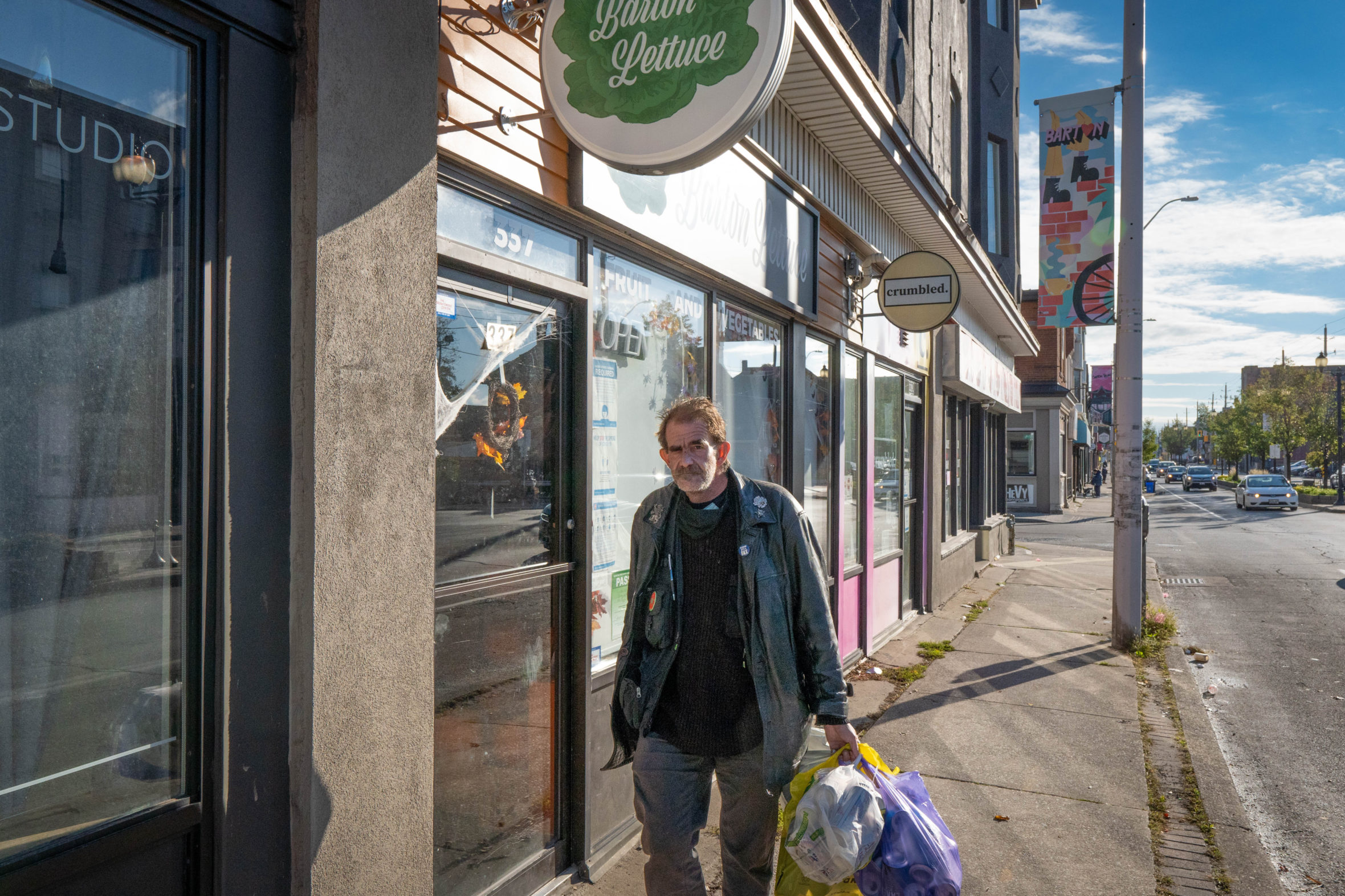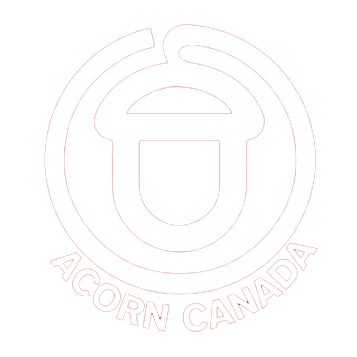CBC News Hamilton: Work in progress
Posted November 8, 2021
Posted November 8, 2021
 Hamilton’s Barton Street Village, specifically the stretch from Victoria to Wentworth Avenue, seems balanced on a knife edge.
Hamilton’s Barton Street Village, specifically the stretch from Victoria to Wentworth Avenue, seems balanced on a knife edge.
On one side of the blade is a derelict past, dotted with abandoned storefronts, drug abuse, poverty and sex workers. On the other, a possible future presaged by new coffee shops, boutiques and restaurants hoping to change the face of the street and shove its demographic — which has one of the lowest average household income levels in the city — uphill.
At the heart of Hamilton’s current urban boundary debate is the question of whether the city has enough space for the housing and jobs needed to accommodate new residents in coming decades.
Here on Barton Street, some residents and business owners see signs urban development could work — new residents blending with old, and a mixed-income neighbourhood emerging.
But when you walk this stretch it feels like a tentative, but promising truce, at best.
To take a snapshot of this tenuous transition, we spent a few days documenting the changing neighbourhood and the people that live and work there.
.Housing prices in the area are on the rise. On Emerald Street alone, running perpendicular to Barton and in the heart of the community, housing prices have quadrupled to an average of $435,000 today, from that of $115,000 10 years ago, according to local real estate agent Miguel Lima.
Lima was a Barton resident — on Emerald Street — from the age of three. Growing up, he was aware of the sex workers and drug use he says never defined the street completely for him.
“We developed street smarts, respected all walks of this life, and it opened us up to the real world, an experience that now as an adult, I am thankful for,” he says.
Lima moved to the Mountain in 2017, but then came back to his childhood street this year. Now Lima lives here with his wife and two daughters.
He calls himself a “Barton believer.”
“I look forward to all the new experiences with my young family, as Barton evolves and reinvents itself. The new shops, eateries and boutiques excite me and make me proud, and I look forward to supporting them with my family and promoting them to those outside of the area,” he says.
A tenuous transition
Toronto developers like Malleum Properties have been renovating derelict buildings, like the one at 301 Barton. But the company has also been accused of engaging in “renovictions” and ignoring tenant concerns by activist group ACORN.
The City of Hamilton has flipflopped on granting Malleum renovation grants, most recently denying it $152,000. That could scare off other developers, but when it comes to new business, many continue to appear, even during the pandemic.
The oldest of the new wave of shops have been around for eight years and are holding firm.
Jessica Lee’s boutique sweet shop, hello baked, was one of the early newcomers to the street. When it opened, only a few high-end businesses like the now-shuttered The Heather restaurant had been earlier bellwethers of the transition.
Two years ago the shop’s Emerald Street mural was defaced by a spray-painted “F**K OFF.” At the time it was thought a local anarchist group, which had also vandalized other Hamilton businesses, was responsible. The Heather had also been vandalized.
“But, it just could have been a random person,” Lee says. “We haven’t had any further trouble. The street has changed dramatically since then.”
New biz on the block
Emerald Coffee Co. is one of the new businesses that have fit themselves into the street.
“We get locals, hospital workers, folks from as far away as St. Catharines,” says Skylar Donovan, 25, the shop’s manager. “We keep it very positive, everyone is welcome. Some of the locals will come in multiple times a day.”
She oversees eight young staff, including Miriam Edghill, a professional dancer who trained in Cuba and has been working here for only a month after a two-year gig at Cargojet in Mount Hope.
Dr. Deborah Siegal is an Ottawa-based hematologist who used to work at the nearby General Hospital.
On this day, she’s grabbing a coffee while waiting for other doctors to perform a heart valve procedure on her father.
“This street right now reminds me of what James Street North or Locke Street was when it was in transition,” she says.
“But I’m worried that Barton doesn’t have the community to support the new places.”
Jacques Dipaola, 64, can look out his front window on Barton and see the Emerald Coffee Co. on the street below.
But, Dipaola, a lifelong resident of the neighbourhood, remembers a very different street.
“There was a long time all these shops were boarded up,” he recalls. “It was really bad, really dead.”
He’s glad the new shops are breathing life into his stomping grounds.
“I remember one night about five years ago, I came home and the place was lit up like it was daytime,” he said. “The cops were tossing druggies and hookers into paddy wagons. They cleaned the place up.”
‘It’s kind of chaos here’
There are street residents who come out at night or shout from battered first-floor apartments or quietly get by in encampments.
Like other parts of Hamilton, some residents feel abandoned by the unaffordable shift that may leave them no place to live if the street tilts to the other side of the knife’s edge.
On a damp morning in October, Brianna Danary and three other women prepare to head out to Barton Street for the day from their makeshift shelters on the edge of Woodlands Park.
Danary, 37, used to live on the Mountain but found herself here recently. She didn’t want to talk but agreed to have her photo taken.
“I just got up and I’m not in a good place. I have to go to work,” she said, adding, when asked where, that she worked “all over” on Barton.
On a separate, humid afternoon, the residents of Danary’s encampment eat and reconstruct their dwellings.
“It’s kind of chaos here right now,” says a young Black man who did not want to share his name.
“It’s not the way we want to live… The city doesn’t want us, but we’re all here together. We’re a community.”
Darryl Bowslaugh, 42, grew up in Hamilton, but left 20 years ago for stints in New York and Nashville. Three years ago he opened a hair salon in Grimsby. Now he’s moving that business to the first floor of 355 Barton.
He’ll be living in the basement with his dog, Austin. “I’m all in,” he says.
Right now a family lives in the first floor of the building. They’ll need to move out once Bowslaugh takes possession, he says.
A birthday dinner in Hamilton led Bowslaugh to checking out a building on Barton. “Let’s just say I fell in love. It just felt life there were a lot of pioneers opening really cute shops. I also noticed the sense of pride people were putting in the windows and on the outside of the buildings. Sprinkled along three or four blocks on Barton Street were these little glimmers of hope scattered along the streets,” Bowslaugh recalls. “I knew I needed to buy this old building.”
Down the street from Bowslaugh’s building, Motel, a pastel-toned and tony restaurant on Barton is humming.
Jakob Bartlett, the manager of the four-year-old restaurant, says the clientele — today, mostly young women — come from as far away as Oakville and Toronto.
“We have a strong Instagram presence,” he says. “13K followers.”
Lisa and Eddie live not far from Motel. But their accommodations aren’t as welcoming. Eddie points to a broken front window on his first floor apartment. It’s been patched with a rusty grill, old signs and cardboard.
“I pay $950 a month plus Hydro and the landlord won’t even fix my window,” he says. “Had my bike stolen too.”
‘We want to be part of this club’
What is the future for Barton Village, its businesses and its residents?
Verlan is a French-Australian fusion crêperie that’s only been on the street for a year.
The owner, Courtney Colas, 35, and her husband Mikael already owned La Parisienne Crêperie in Oakville.
“We wanted a location that was a little more like on the outskirts of Paris, not downtown,” she says.
Colas says the gentrification that was in full swing on the street a couple of years ago got slowed down by COVID.
“But, I’m optimistic now. I’m seeing new places opening. We feel we’re a niche, a little out-of-the-box and we want to be part of this club.”
It’s still easy to find the signs of poverty in this neighbourhood, however.
Folks amble out of the fog, young men like Brian Case, 39, sort junk and beg for change in an abandoned storefront.
Young women pace sidewalks at night. Their work is a constant counterpoint, impossible to ignore on the shifting street.
Barton Lettuce is an airy grocery store that’s fresh to the neighbourhood. “We opened in May,” says owner Alexandra Sinclair, 34.
Sinclair, who’s lived a few minutes from the shop for six years, isn’t naive to the mix of residents on the street.
“We get mostly local folks, but people come from all over the city. We try to keep our prices low for everyone in the neighbourhood so it’s affordable and accessible.”
That inclusive approach, along with other hopeful signs — in the form of the word ‘love,’ for instance — appear throughout the neighbourhood.
They are stenciled on picket fences, railway overpasses, on the wall of a street mission, the side of the community fridge or sometimes sprayed on a patch of asphalt.
They are messages for passers-by and, just maybe, for Barton Street itself.
***
Article by Wayne MacPhail for CBC News

